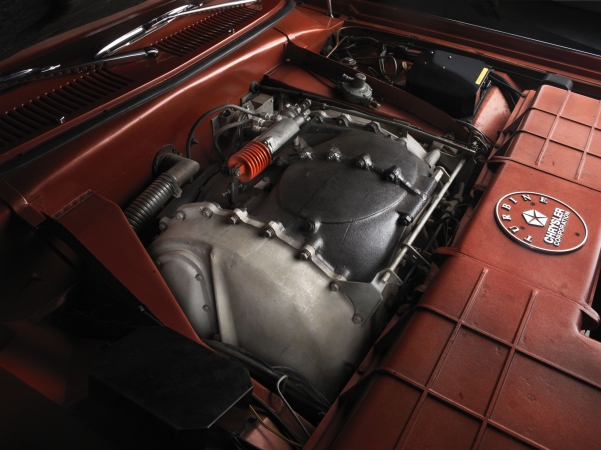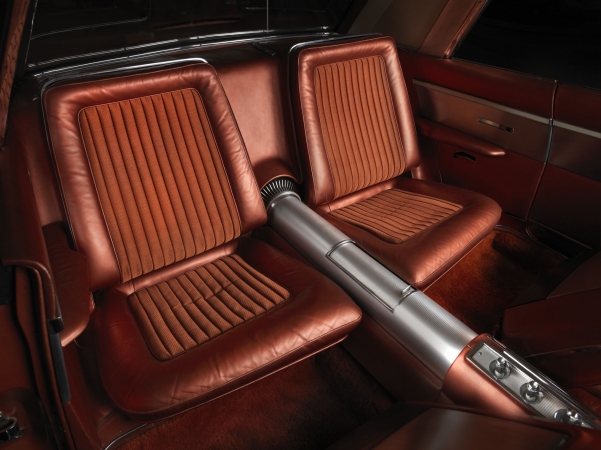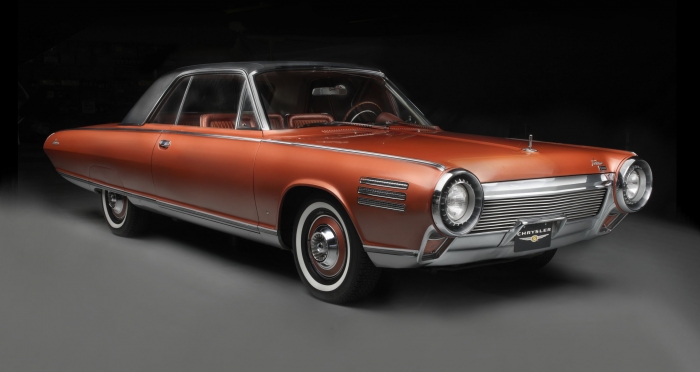Collection of FCA, Auburn Hills, Michigan
Sponsored by: Mr. and Mrs. Martin F. McNamara III

1963 Chrysler Turbine: Ultimate Edition, Jay Leno’s Garage 
1963 Chrysler Turbine: Ultimate Edition, Jay Leno’s Garage 
1963 Chrysler Turbine: Ultimate Edition, Jay Leno’s Garage 
1963 Chrysler Turbine: Ultimate Edition, Jay Leno’s Garage
In a bold venture, Carrozzeria Ghia built the bodies for fifty-five experimental Chryslers fitted with gas turbine engines during the early 1960s. Designed internally by Chrysler Corporation in the late 1950s, the multifuel turbine engine was the focus of a long-range development program that ran for decades and cost millions of dollars at a time when a million meant something to major manufacturers.
Styling of the Turbine bodies was an amalgam of American and Italian ideas—mostly the former. Ghia’s technical director, Giovanni Savonuzzi, the brilliant engineer who had almost single-handedly created the postwar design idiom known as the “Italian line” with his Cisitalia racing coupes, might have contributed a bit of input to the cars, but the overall effect was clearly contemporary American. Truth be told, Chrysler’s Turbine Cars looked like Fords, totally divorced from the dramatic, tall tail fin shape characteristic of late 1950s Ghia-inspired Chryslers. The squared-up Thunderbird-like upper structure of the experimental cars was a strong sign that Ghia’s long-term interest in aerodynamics had no place in the Turbine program.
In 2008 comedian Jay Leno purchased a Turbine Car from the Walter P. Chrysler Museum. I enjoyed a revelatory run in it a couple of years ago. The ride was smooth. The noise was at a low level but featured the high whine of a jet plane taxiing. There was a slight whiff of fuel, again rather like what one might sense in an older airliner. Acceleration was not impressive in any sense—neither noticeably quick nor slow; it was just in line with a typical family car of that era, but throttle response was slower. Turbines do not make nitrous oxide pollutants, and one day may become the ideal auxiliary power source for electric cars, but we are unlikely to ever again see a car with turbines driving the wheels directly. That’s too bad. It was a tantalizing possibility. Ironically, the company started in the Roaring Twenties by Walter P. Chrysler is now Italian owned: Fiat Chrysler Automobiles.
—Adapted from the exhibition catalogue essay by Robert Cumberford
